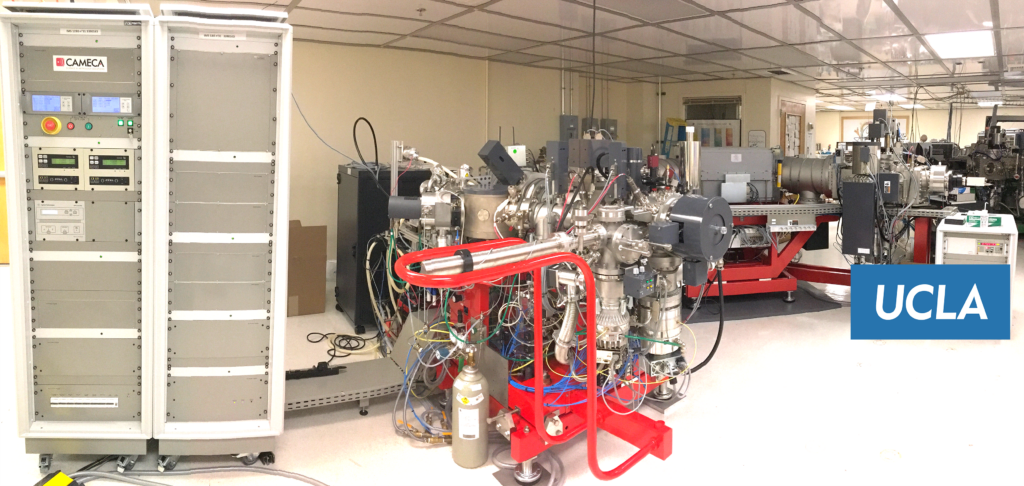
Over the past three decades, we have striven to create a world-leading facility at UCLA for in situ microscale isotopic analyses of geologic materials and to provide access to its capabilities to the broader community to address important problems in Earth and Planetary science. In that time, we have hosted over 400 scientists and students from both the US and other nations. Their research findings, together with our work, have had a significant impact in the Earth sciences. We remain committed to operating an open, effective facility that strives to be a leader in scientific innovation and in pioneering applications in cognate disciplines, and one that has a broad impact in science education. The scientific expertise and instrumental infrastructure capabilities of our laboratory remain at the leading edge of isotopic geoscience investigations.
Our principal role within the national geoscience infrastructure has been in providing leadership in SIMS accessory mineral dating. As scientific investigations have evolved towards probing ever smaller spatial scales, new complexities in the behavior of minerals hosting geochronometric systems have emerged placing special emphasis on the high lateral resolution capabilities of the ims1290 instrument. High-resolution analyses of correlated isotopic, elemental, and mineralogical properties are also required to investigate and interpret proxy ‘environmental’ records, whether they are encoded in samples originating on the early Earth, in the biosphere, or on other planetary bodies. In addition to addressing a host of scientific problems requiring ultra-high spatial resolution and high precision analyses with the state-of-the-art ims1290, we still maintain the venerable ims1270 instrument.
The UCLA SIMS (a CAMECA ims-1290 and 1270) is partly supported by the NSF Instrumentation and Facilities Program.
